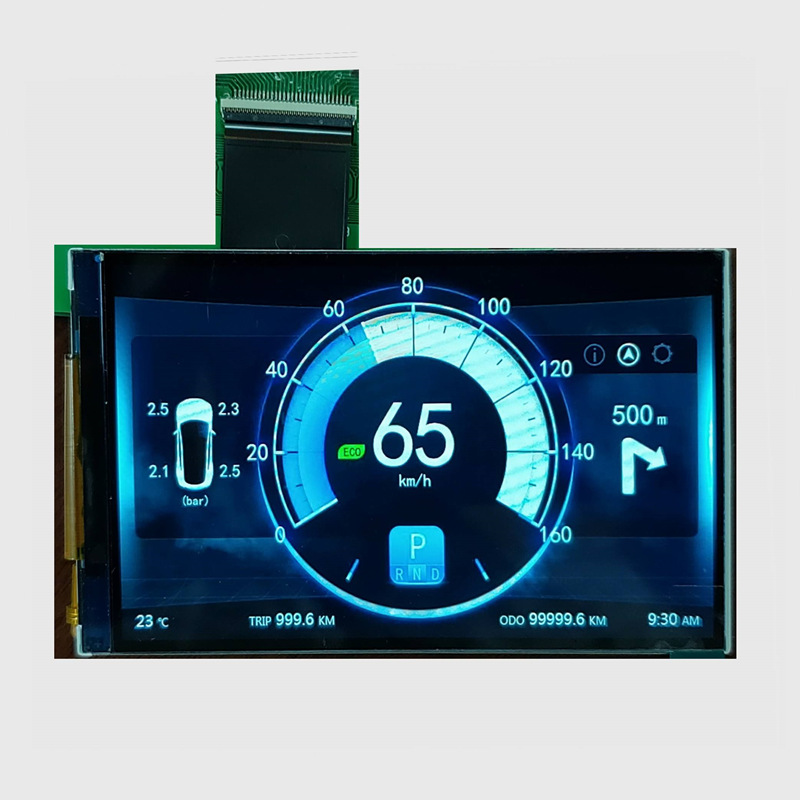Jun. 28, 2023
Electronic Components & Supplies
When it comes to TFT (Thin-Film Transistor) display modules, there are various types available, each offering unique features and capabilities. Understanding the different types and their characteristics is essential for selecting the right TFT display module for your specific application. In this guide, we will compare and provide an overview of the most common types of TFT display modules.

TN TFT display modules are the most basic and widely used type. They offer fast response times, making them suitable for applications with dynamic content such as gaming and video playback. TN displays are cost-effective and have good contrast ratios but may have limited viewing angles and color accuracy compared to other types.
IPS TFT display modules provide superior color reproduction, wide viewing angles, and better color consistency across the screen. They offer excellent image quality and are ideal for applications where accurate color representation is crucial, such as graphic design, photography, and multimedia. IPS displays typically have slower response times compared to TN displays but are highly valued for their color accuracy.
VA TFT display modules strike a balance between TN and IPS displays. They offer better color reproduction and wider viewing angles than TN displays, while also providing faster response times than IPS displays. VA displays are suitable for applications that require a good balance between image quality and response time, such as gaming, multimedia, and general-purpose displays.
STN TFT display modules are an older technology that offers higher contrast ratios and wider viewing angles compared to TN displays. They are commonly used in applications where cost is a critical factor, such as budget-friendly consumer electronics. However, STN displays may have slower response times and limited color reproduction compared to other types.
AFFS TFT display modules are a variation of IPS displays that further improve viewing angles and sunlight readability. They provide better image quality in outdoor environments with bright lighting conditions, making them suitable for applications such as mobile devices and outdoor displays. AFFS displays offer high contrast ratios, wide viewing angles, and excellent color reproduction.
MVA TFT display modules are known for their excellent contrast ratios and wide viewing angles. They offer improved color reproduction and image quality compared to TN displays. MVA displays are commonly used in high-end monitors, medical imaging, and professional displays that require accurate color representation and wide viewing angles.
AH-IPS TFT display modules are a further enhancement of IPS technology, offering improved color accuracy, wider viewing angles, and faster response times. They provide excellent image quality and are commonly used in high-end monitors, professional displays, and mobile devices where color accuracy and wide viewing angles are critical.
Application Requirements: Determine the specific requirements of your application, such as color accuracy, viewing angles, response time, and budget.
Display Size: Choose the appropriate display size that fits your application and viewing needs.
Environmental Factors: Consider the operating environment, including lighting conditions, temperature range, and any specific requirements such as outdoor readability or ruggedness.
Resolution: Determine the required resolution based on the level of detail and clarity needed for your application.
Budget: Set a budget and consider the cost-effectiveness of the different display module options available.
Customization Options: If necessary, check if the manufacturer offers customization options such as touch screens, protective coatings, or specific connectors.
By evaluating these factors and understanding the different types of TFT display modules, you can select the most suitable option for your application, ensuring optimal performance and user experience.
Previous: Benefits of Using a Hybrid Inverter for Solar Power Systems
Next: Understanding the Difference Between Electrolytic Capacitors and Normal Capacitors
If you are interested in sending in a Guest Blogger Submission,welcome to write for us!
All Comments ( 0 )